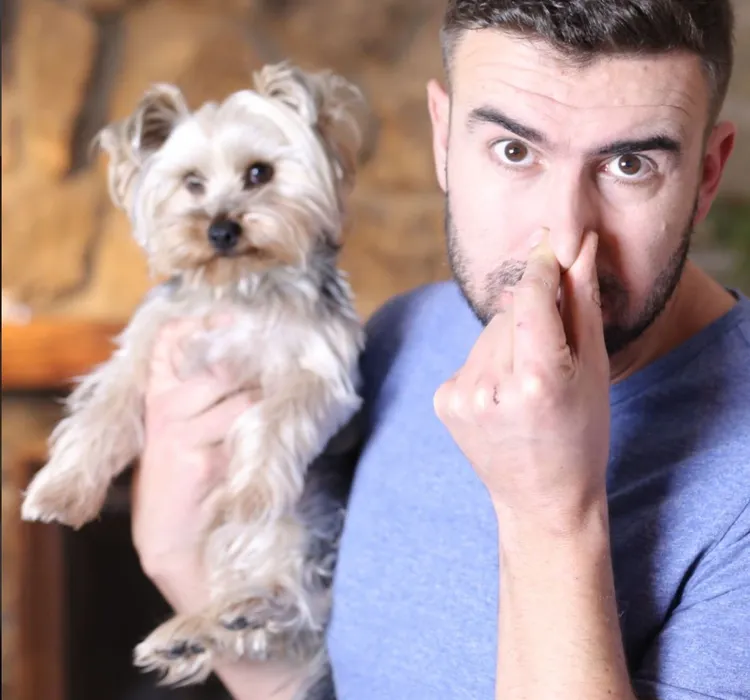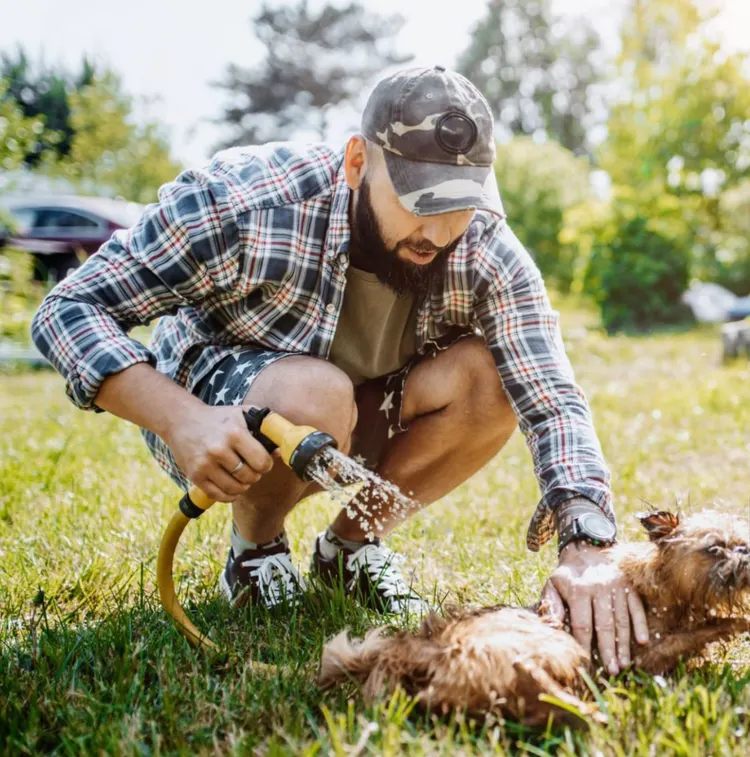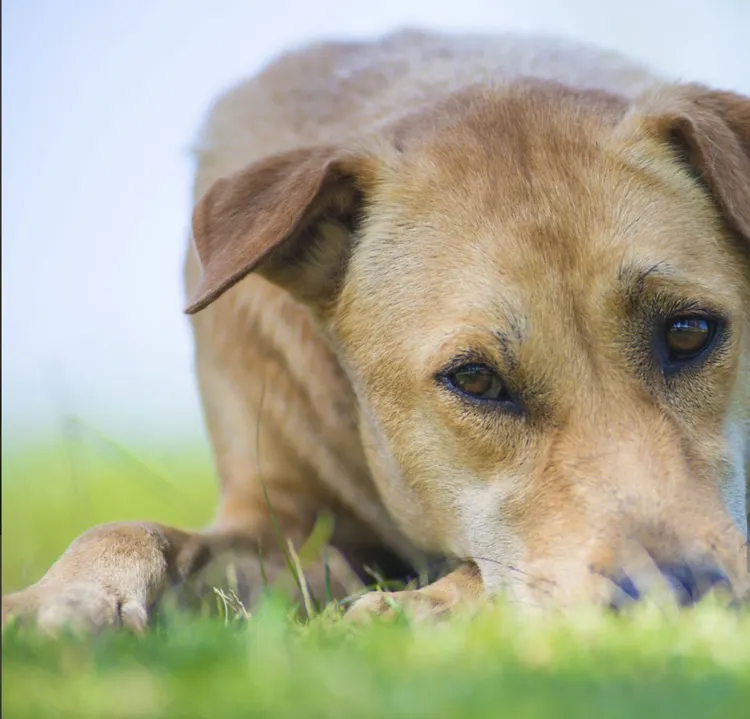Ever heard of “Dirty Dog Syndrome”? While it might sound like a playful nickname, for many pet parents, it’s a frustrating reality—dealing with a consistently messy, smelly dog despite regular grooming. It’s not just about hygiene; underlying factors can cause a dog’s coat to become greasy, matted, or odorous. Thankfully, with the right approach and eco-friendly grooming practices, you can address the root of the issue while keeping your dog clean and healthy.
What is Dirty Dog Syndrome?
Dirty Dog Syndrome refers to the persistent accumulation of dirt, oil, and odors on a dog’s coat and skin, even after regular grooming. Some dogs naturally produce more oils, while others might struggle with recurring skin issues. Regardless of the cause, Dirty Dog Syndrome can be both uncomfortable for the dog and frustrating for pet owners.
Underlying Causes of Dirty Dog Syndrome
Understanding what leads to Dirty Dog Syndrome can help prevent it in the first place. Several factors contribute to this condition, and identifying them is the first step toward proper care.
1. Skin Issues or Allergies
Some dogs have sensitive skin or underlying allergies that lead to excessive oil production. Seborrhea, a common skin disorder in dogs, causes overproduction of oil, resulting in a greasy, smelly coat. Dogs with allergies to pollen, dust, or certain foods may also scratch or lick themselves excessively, leading to a build-up of oils and dirt.
2. Improper Grooming Routines
Skipping regular brushing or using unsuitable grooming products can worsen Dirty Dog Syndrome. Many commercial shampoos contain harsh chemicals that strip away the natural oils from a dog’s skin, causing it to overproduce oil to compensate. Over-bathing can similarly trigger this reaction, leaving your dog greasier in the long run.
3. Environmental Factors
Dogs that frequently play outdoors in muddy parks, or those living in areas with frequent rain or humidity, are at higher risk of developing Dirty Dog Syndrome. Wet and muddy conditions make it easier for dirt, bacteria, and oils to build up in the fur, contributing to an unpleasant odor.
Common Symptoms of Dirty Dog Syndrome
While it’s normal for a dog to get dirty occasionally, certain signs indicate a more persistent issue:

- Persistent musty or unpleasant odor even after grooming.
- Greasy or matted fur, with a slick or sticky texture.
- Itchy or irritated skin, often leading to excessive scratching or licking.
- Frequent infections or hot spots due to bacterial or fungal growth on oily, unclean skin.
If your dog exhibits any of these symptoms, it’s essential to address them promptly to avoid discomfort or more severe skin conditions.
Natural and Effective Solutions
Eco-friendly grooming solutions offer a sustainable way to manage Dirty Dog Syndrome while ensuring your dog’s coat and skin stay healthy. These methods focus on natural ingredients, reducing chemical exposure, and supporting your dog’s overall well-being.
1. Regular Brushing
Brushing is one of the easiest and most effective ways to manage Dirty Dog Syndrome. Regular brushing helps distribute natural oils evenly across your dog’s coat, preventing oil build-up in certain areas while removing dirt and debris.
- Opt for eco-friendly brushes made from sustainable materials like bamboo or natural rubber. These tools are both durable and environmentally conscious, helping to reduce plastic waste.
- Depending on your dog’s coat type, brushing once or twice a week is ideal. For long-haired dogs, more frequent brushing may be necessary to prevent matting.
2. Eco-Friendly Bathing Routine
Bathing your dog too often can strip away essential oils, causing the skin to overcompensate with excess oil production. When you do bathe your dog, use natural, biodegradable shampoos free from harsh chemicals like sulfates, parabens, and synthetic fragrances.
- Choose shampoos with natural ingredients such as oatmeal, aloe vera, or chamomile, which are gentle on the skin and help to balance oil production.
- Avoid over-bathing. Dogs with Dirty Dog Syndrome should be bathed no more than once a month unless advised otherwise by a vet.
3. Diet and Supplements
A dog’s coat reflects its overall health, and diet plays a crucial role in maintaining a healthy, balanced skin and coat. Providing a diet rich in omega-3 fatty acids can support skin health and reduce excessive oil production. Foods like salmon, sardines, or supplements such as fish oil or coconut oil can help improve coat quality.
- Adding natural, eco-friendly supplements like fish oil (from sustainably sourced fish) or plant-based omega-3 alternatives like flaxseed oil can make a big difference.
4. Natural Deodorizing Sprays
Instead of using chemical-laden sprays to mask odors, opt for natural, DIY deodorizing sprays. These can be made at home using simple ingredients like apple cider vinegar or lavender essential oil. Not only are these sprays safe for your dog’s skin, but they’re also biodegradable and free from toxic additives.
- A simple DIY spray can be made by mixing 1 part apple cider vinegar with 2 parts water, adding a few drops of dog-safe essential oils like lavender or chamomile for a pleasant scent.
5. Check for Underlying Health Issues
Sometimes, Dirty Dog Syndrome is a sign of an underlying health problem such as parasites, infections, or allergies. If your dog’s coat issues persist despite regular grooming, it’s a good idea to visit the vet. They can rule out any medical conditions contributing to excess oil production or odor.
Long-Term Prevention Tips
Consistency is key to preventing Dirty Dog Syndrome. By adopting regular grooming habits and supporting your dog’s health with eco-conscious practices, you can keep their coat clean and healthy.

1. Consistent Grooming Routine
Maintaining a routine of weekly brushing and seasonal baths will keep your dog’s coat in top shape. Grooming helps remove loose hair, dirt, and debris while distributing natural oils evenly. This prevents the greasy, matted texture characteristic of Dirty Dog Syndrome.
2. Eco-Friendly Grooming Services
If you prefer to use professional grooming services, consider choosing salons that prioritize eco-friendly practices. These grooming centers often use natural shampoos, energy-efficient equipment, and sustainable tools to reduce their environmental footprint. Supporting these businesses aligns with your eco-conscious values and ensures your dog gets safe, effective care.
3. Clean Living Environment
Your dog’s living environment also plays a role in maintaining their coat’s cleanliness. Regularly washing bedding with non-toxic detergents helps reduce the amount of dirt and oils your dog is exposed to while resting. Avoid synthetic fragrances or harsh chemicals, as they can irritate the skin and contribute to Dirty Dog Syndrome.
Conclusion
Dirty Dog Syndrome can be a frustrating problem for dog owners, but with the right approach, it’s entirely manageable. By embracing eco-friendly grooming practices, such as using natural products, regular brushing, and incorporating a balanced diet, you can keep your dog’s coat clean and healthy while reducing environmental impact.
Whether you’re switching to natural shampoos, incorporating omega-rich supplements, or using biodegradable grooming tools, your choices not only benefit your dog but also contribute to a more sustainable planet.
With patience, consistency, and eco-conscious care, you can banish Dirty Dog Syndrome for good, ensuring your pup stays fresh, clean, and comfortable!



